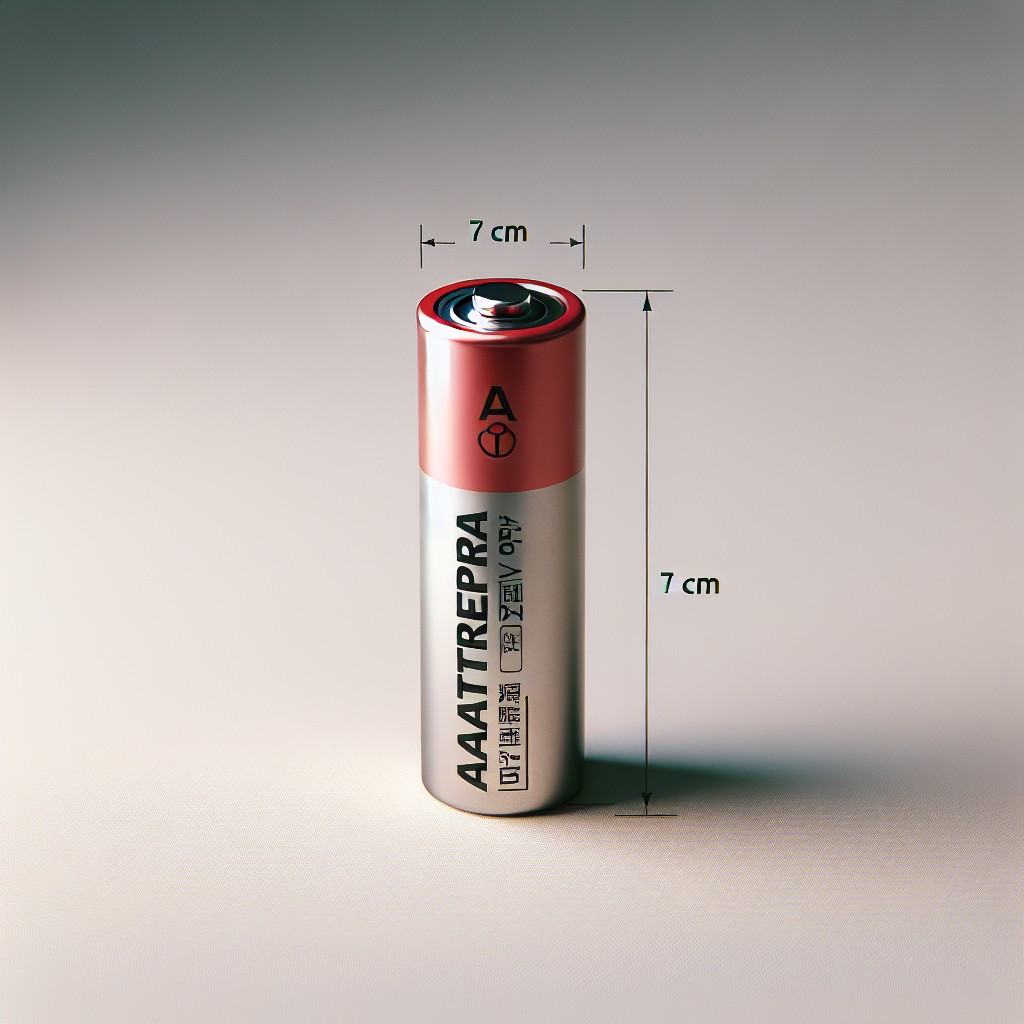Last updated on
Understanding the actual size of 7cm can be intriguingly fascinating, because it might be larger or smaller than you perceive.
Key takeaways:
- 7cm is the approximate length of an adult’s thumb.
- Stacking three dice gives a visual approximation of 7cm.
- The diagonal screen size of a smartphone is often measured in centimeters.
- 7cm is comparable to the length of a crayon or the width of a playing card.
- A cube with dimensions of 7cm x 7cm x 7cm has a volume of 343 cm³.
What's Inside
Common Objects Comparable to 7cm in Size

Familiarizing yourself with the size of 7 centimeters is easier when comparing it to items often encountered in daily life. For a start, a standard adult’s thumb, from the tip to the first knuckle, is roughly this length. It’s akin to the short side of a credit card which measures just a tad longer. If you have a set of dice, stacking three of them will approximate the 7cm mark.
School supplies can also offer a handy reference. A standard paperclip is about 3 centimeters long, so lining up two and a half paperclips end to end gives you a visual approximation. If you happen to have a sticky note nearby, they are typically 7cm along each side, providing a perfect square example.
In the digital realm, the diagonal screen size of a smartphone is frequently measured in centimeters. In this context, 7cm doesn’t quite reach the display lengths on most modern phones but certainly helps understand scale when comparing older models or small gadgets like smartwatches.
These everyday comparisons make the abstract measurement more concrete, enhancing your spatial understanding of how large 7cm truly is.
Visual Comparison to Everyday Items

Imagine a standard box of crayons; the length of one crayon is typically close to 7cm. If you have sticky notes nearby, their width often matches this measurement.
For those who savor a morning espresso, the diameter of a typical shot glass also mirrors the dimension we’re exploring. Next time you reach for a playing card to enjoy a game, observe its width – that’s a comparable size.
Should you find yourself peeling a banana, the width of its stem when cut across offers a tangible sense of the measurement in question. Keep these everyday comparisons in mind to help you better visualize and understand various dimensions in your daily life.
How Many Inches Is 7cm?
To grasp the inch equivalent of 7 centimeters, you need to know the conversion factor between these two units of measurement. One inch is defined as exactly 2.54 centimeters. By dividing the length value in centimeters by 2.54, you can find out how many inches it represents.
So, for 7 centimeters, the calculation would be:
7 cm ÷ 2.54 cm/inch = about 2.76 inches
This means that 7 centimeters is just over two and three-quarter inches long. To visualize this length, consider it to be a bit less than the width of a standard smartphone, or approximately the length of a typical new pencil before it’s sharpened. These everyday comparisons make it easier to picture the length when you come across centimeter measurements.
Convert 7cm to Millimeters
Conversion between centimeters and millimeters is straightforward: 1 centimeter equals 10 millimeters. To convert 7 centimeters to millimeters, multiply by 10.
Multiplication Method: Simply multiply 7 by 10. Mathematically, it’s 7 cm * 10 mm/cm = 70 mm.
Decimal Movement: Visualize moving the decimal point one place to the right. This transforms 7.0 centimeters into 70 millimeters.
Practical Application: When measuring smaller objects, millimeters offer a more precise reading. If a ruler displays centimeters, converting to millimeters refines the measurement.
Understanding this conversion is key for fine measurements in various fields, such as engineering, crafts, and science, where precision matters. Remember the ratio: 1 cm to 10 mm, and you’re equipped to handle conversions with confidence.
Understanding Dimensions: What Is 7cm X 7cm X 7cm?
When you come across a set of three numbers like this, you’re dealing with the dimensions of a cube. Each figure represents the length of the sides, in this case, all sides are equal, forming a perfect cube.
Imagine a small sugar cube, which is about 1cm on each side; a cube with 7cm dimensions would be significantly larger, similar to an apple or a baseball.
This measurement is a way to express volume, which is the amount of space within the cube. To visualize it better, consider a small box that could contain around 27 standard-size sugar cubes. This box would have the volume that you’re calculating, with each side being seven times longer than the sugar cube.
To find the actual volume, simply multiply the three values together. So, it’s 7cm * 7cm * 7cm = 343 cubic centimeters (cm³). This is the total volume of space inside the cube or box you’re imagining. The concept applies to anything with a cubical shape: from packaging boxes to pieces of cheese.
In practical terms, if you filled this cube with water, it would hold 343 milliliters, as 1 cubic centimeter equals 1 milliliter. Understanding these spatial dimensions can be crucial in contexts like interior design, packaging, or even baking, where volume is key.
Comparing Different Measurements: Which Is Bigger 7cm or 18mm?
Navigating the metric system is smoother once you know the conversion basics: 10 millimeters (mm) equal 1 centimeter (cm).
So, when faced with the dilemma of sizing up 7cm against 18mm, a quick multiplication reveals the solution.
Multiplying the centimeter value by 10, we convert 7cm to 70mm.
Instantly, it becomes vivid that 7cm, now viewed as 70mm, outmeasures 18mm by a considerable margin.
This method ensures that you can swiftly compare lengths in millimeters and centimeters without second-guessing.
Remembering this simple multiplication trick allows for effortless conversion and comparison between these two common units of length.
Organizing Measurements: 18mm, 7cm, 3dm, 1m From Least to Greatest
To grasp the size hierarchy, let’s start by converting all measurements to the same unit—centimeters. Here’s a quick conversion guide:
- 1 millimeter (mm) equals 0.1 centimeters.
- 1 centimeter (cm) is just that – a centimeter, the base unit for these conversions.
- 1 decimeter (dm) is equal to 10 centimeters.
- 1 meter (m) is equal to 100 centimeters.
Using this guide, let’s break down each measurement:
- 18mm converts to 1.8cm.
- 7cm remains unchanged, as our base unit is centimeters.
- 3dm converts to 30cm.
- 1m converts to 100cm.
Now, arranging from the smallest to the largest, the sequence would be:
- 1.8cm (18mm)
- 7cm
- 30cm (3dm)
- 100cm (1m)
This ordered list clearly illustrates that as the unit identifier increases from millimeters to meters, so does the actual length, transitioning smoothly from the minuscule to the meter stick.
Calculating Circle Diameter With a 7cm Radius
Understanding the relationship between radius and diameter is essential in geometry. The radius is half the length of the diameter, which means that if the radius of a circle is 7cm, the diameter would be twice that length. Simple multiplication gives us the answer: 7cm x 2 = 14cm. Thus, a circle with a 7cm radius has a 14cm diameter.
This connection is critical when considering formulas involving circles. For instance, the circumference of a circle can be found using the diameter and the mathematical constant pi (π). The formula C = πd reflects this, where “C” represents the circumference, and “d” is the diameter of the circle. With our diameter of 14cm, the circumference, C, would be approximately 43.98 cm (14cm x π ≈ 43.98cm).
When applying these concepts, it helps to visualize a physical object. Imagine a round coaster with a radius of 7cm; the entire distance across that coaster would be the diameter of 14cm. This grasp of radius and diameter paves the way for deeper exploration into the world of geometry and its practical applications.
Determining the Diagonal of a 7cm By 5cm Rectangle
When faced with a rectangle, such as a smartphone screen or a book cover, you might want to measure the length of a diagonal line stretching from one corner to the opposite. Here’s how to calculate it when the sides are 7cm and 5cm:
1. Apply the Pythagorean Theorem: This classic geometric principle tells us that, in a right-angled triangle, the square of the length of the hypotenuse (the side opposite the right angle) is equal to the sum of the squares of the lengths of the other two sides.
2. Identify the sides of your right triangle: In the case of the rectangle, the lengths of 7cm and 5cm are the legs of the right triangle that form the right angle, while the diagonal is the hypotenuse.
3. Square the sides’ lengths: Square the length of each side, resulting in 49cm² (7cm x 7cm) and 25cm² (5cm x 5cm).
4. Add the two squared numbers: Combine these to get 74cm².
5. Find the square root of the sum: The diagonal is the square root of 74cm², which is approximately 8.60cm.
Understanding this straightforward process enables you to quickly determine the longest line within a rectangle without the need for measuring tapes or rulers, provided you know the lengths of the sides.
Volume Calculation of a Cylinder With 7cm Height and 20cm Diameter
To calculate the volume of a cylinder, multiply the area of the base by the height. The base of a cylinder is a circle, so begin with the formula for the area of a circle, which is A = πr², where r is the radius.
1. First, find the radius of the cylinder. Since the diameter is given as 20cm, divide by two to get the radius: 20cm / 2 = 10cm.
2. Next, use the radius to calculate the area of the base (circle): A = π(10cm)² = π(100cm²) ≈ 314.16cm².
3. Now, calculate the volume by multiplying the area of the base by the height: V = area × height = 314.16cm² x 7cm ≈ 2200.12cm³.
The volume of the cylinder is approximately 2200.12 cubic centimeters. Remember, the formula V = πr²h encapsulates the entire process in a single expression, providing a direct route to calculating the volume of a cylinder.
Radius Deducing From a Cylinder Volume of 550cm³ and Height of 7cm
To deduce the radius from a cylinder with a volume of 550 cm³ and a height of 7 cm, you need to know the formula for the volume of a cylinder: V = πr²h, where “V” represents volume, “r” is the radius, and “h” is the height.
By rearranging this formula to solve for “r“, you get the radius formula: r = √(V/(πh)).
Follow these steps to calculate the radius:
- Plug the known values into the rearranged formula:
r = √(550 cm³ / (π * 7 cm)) - Calculate the denominator (π * 7 cm), which gets you approximately 21.99 cm.
- Divide the volume (550 cm³) by the result from step 2, giving you approximately 25.01.
- Take the square root of 25.01 to find the radius. The square root of 25.01 is about 5 cm.
Hence, the cylinder’s radius is approximately 5 cm. Remember, using π to two decimal places (3.14) suffices for most practical purposes. For more precision, use more digits of π.
Exploring the Centimeters to Inches Conversion Chart
Centimeters to inches conversion charts provide a quick reference to translate metric measurements into imperial units. Here are some key points to consider when using these charts:
1. Precision Matters: Charts typically show conversions to two decimal places for accuracy, though some measurements are rounded for simplicity.
2. Converting 7cm: As an example, locate 7cm on the chart, and the corresponding column will provide the conversion result in inches (7cm ≈ 2.76 inches).
3. Scale Differences: Understand that 1 inch is equivalent to 2.54cm; this fixed ratio is integral to making conversions and is the foundation of any centimeters to inches chart.
4. Fraction Conversions: For activities like sewing or carpentry, charts may also display common centimeter measurements in fractions of an inch to facilitate precise work without complex decimals.
5. Utilizing Online Tools: Aside from physical charts, numerous online converters can perform the conversion instantly after inputting the centimeter value.
By referring to a conversion chart, you can quickly switch between metric and imperial systems, ensuring measurements align with personal preference or project requirements.
Solving Practice Problems for Converting Cm to Inches
Understanding conversion from centimeters to inches is straightforward when you know that one inch equates to 2.54 centimeters. To transform centimeters into inches, divide the number of centimeters by 2.54.
For example, to convert 7 cm to inches, divide 7 by 2.54, which equals approximately 2.76 inches.
Let’s tackle a couple of practical examples.
- Convert 10cm to inches:
10 cm ÷ 2.54 cm/inch = 3.94 inches. So, 10cm is just under 4 inches. - Imagine you have a piece of fabric that is 25cm wide and you need the measurement in inches:
25 cm ÷ 2.54 cm/inch = 9.84 inches. The fabric width is nearly 10 inches. - Perhaps you are buying a fish tank that is 50cm long, and all your fish tank equipment is sized in inches:
50 cm ÷ 2.54 cm/inch = 19.69 inches. The tank length is roughly 19 and 2/3 inches.
To simplify things, remember that 2.54 cm is slightly over 2 1/2 inches. Thus, half of 2.54 cm would be about 1 1/4 inches. This can help you estimate measurements without a calculator.
These examples illustrate the simplicity of converting centimeters to inches. Practice with different measurements to become proficient and make shopping or DIY projects easier when switching between metric and imperial systems.
FAQ
How big is the 7cm?
Seven centimeters approximately equals 2.76 inches.
What does 1 cm look like?
One centimeter is roughly equivalent to the width of a standard pencil, the length of a staple, the combined width of five stacked CDs or DVDs, the thickness of a notepad, or the radius of a U.S. penny.
What is the size of a pea in cm?
The size of a pea is approximately 1 cm.
How does 7cm compare to common household items?
Seven centimeters is approximately the length of a standard credit card.
What objects typically measure around 1cm?
Typical objects that measure around 1cm include a staple, a cherry tomato, or the diameter of a AAA battery.
Can you provide a visual comparison for a pea-sized object in centimeters?
A pea-sized object typically measures about 0.5 cm in diameter.




